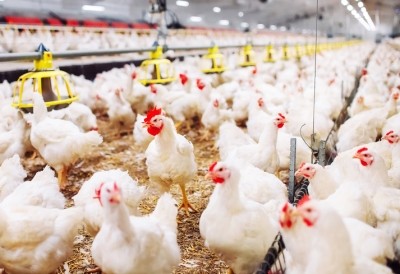special edition: Pig and poultry gut health
Folium looks to target bacteria with ‘guided biotic’

We caught up with the UK-headquartered biotech startup to hear more about their work and time with the Alltech accelerator program during One: The Alltech Ideas Conference.
The company was one of a selection picked to go through the Pearse Lyons Accelerator and take part in the conference last month.
Folium grew out of work with bacteria control and an interest in addressing antimicrobial resistance through the development of alternatives, said Edward Fuchs, co-founder and CEO, Folium Science.
“We got granted the first US patent for this guided biotic technology and we then got funding to put a team together to start working on proof of concept,” he said. “We formed Folium in late 2016 to be able to facilitate that funding round to do the product development.”
“We know that the livestock industry has been under a lot of pressure to reduce antimicrobial usage,” he said.
Currently, the company is working on pulling together the research needed to submit a dossier to the US Food and Drug Administration (FDA) for product approval, said Fuchs.
“We need to go through the regulatory approval to move it through – we’re very clear that this is a good route to market,” he added.
Work with ‘guided biotics’
Folium is developing a feed additive for use as an additive in poultry diets or for delivery in water.
However, it starts to work in the animal’s digestive system, added Fuchs. The feed additive is intended to attach selected pathogenic bacteria and prompt them to start a process of “self-digestion.”
“It’s an enzyme reaction – it’s the enzymes that destroy the cell material,” added Alice Cadman, marketing and communications, Folium. “We’ve called it a ‘guided biotic’ because it’s not just a probiotic, it’s not an enzyme, but it sits in that space along with probiotics and enzymes.”
“It is very, very specific in the targeting of the bacteria and … we guide our biotic into the place in the bacterial cell where it makes the cut and causes the bacteria to digest itself,” she said.
The additive also will have the ability to work more like a traditional probiotic and outcompete other bacteria for space in the gut, said Fuchs.
“Ours will compete for the colonization, but also kill those they’ve been designed to kill,” he added.
Additive development and markets
Since its inception, Folium has been building its team and focusing its product development, said Fuchs.
“The first bit was, can we make the science work on a different bacterium? And we moved it from E. coli to salmonella,” he said.
If every part of the process moves according to plan the goal is to have the first guided biotic feed additive to market in two years, said Fuchs.
Addressing the presence of salmonella in poultry is the current focus for the company's anticipated initial product launch, he said.
However, it is looking to work with other pathogenic bacteria like campylobacter or clostridia in the future.
“We look at this relatively simplistically – that those that have a pathogenic nature are those that we do not want, those that could potentially cause animal disease or could cause human disease,” he said of the focus on specific bacteria. “We’re looking at all these and we’re seeing very common ways of being able to take them out of the gut of the animal.”
Salmonella was selected because of the need in the industry, Fuchs said. Initially, the target market will be the US followed by countries in the Southeast Asian region.
“There is an openness both from an industry and from a regulatory perspective for solutions to deal with certain issues food born illness issues that’s absolutely key,” he said of why the US is the initial market.
“We’re hopeful that our conversations with regulators will take into account that the industry really needs this,” said Cadman. “Obviously we’ll be very thorough and very robust in everything we do to provide the evidence and dossiers through the FDA, [and] we’re hopeful that the FDA will look favorably on it.”
However, the feed additive could eventually be used in more than poultry, she said. “It’s a multispecies approach – the technology will work as well in a pig as it would in a bird,” she added.
Taking part in the accelerator program has brought the startup additional support and help with business strategy and development, said Fuchs.















